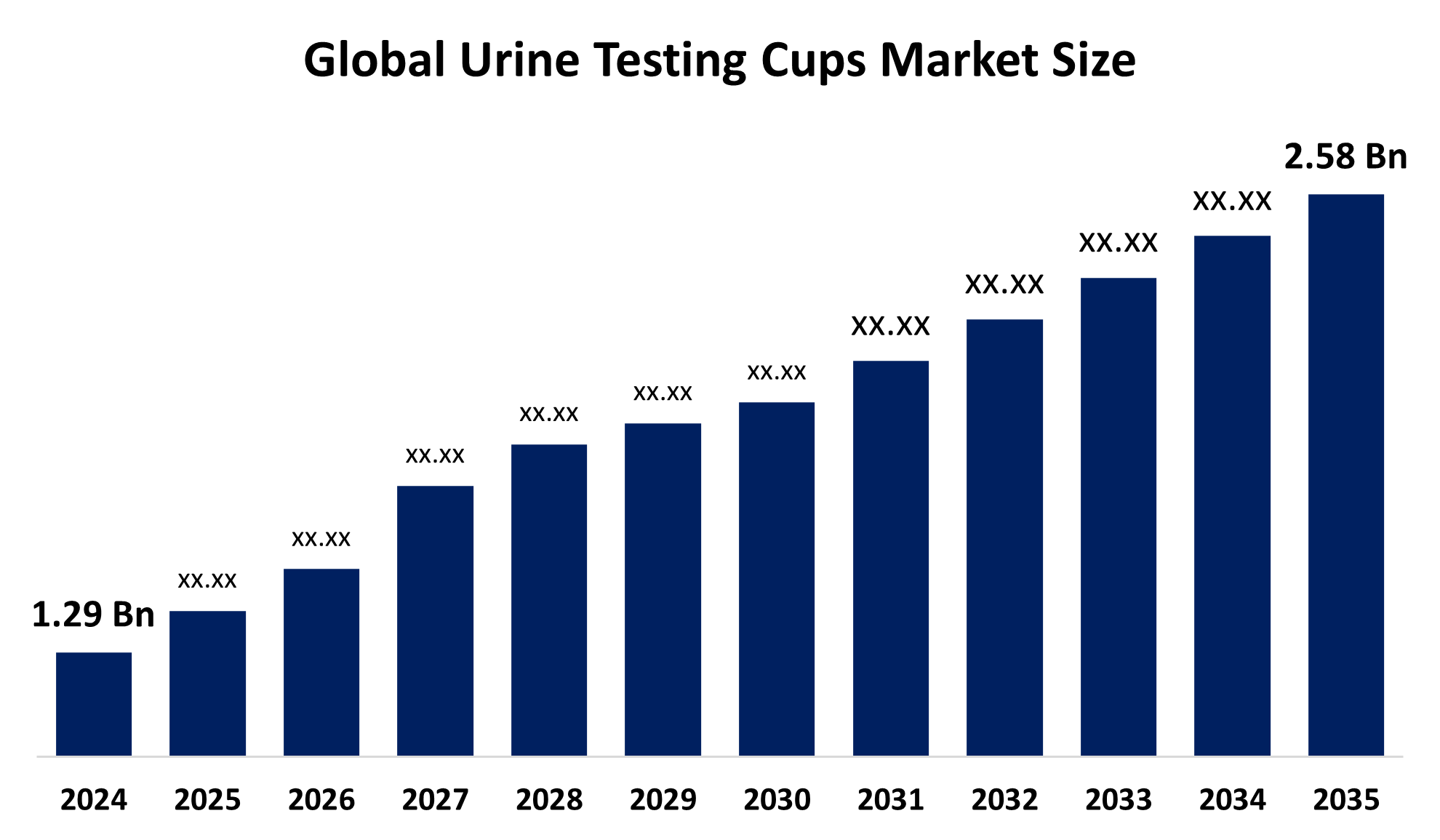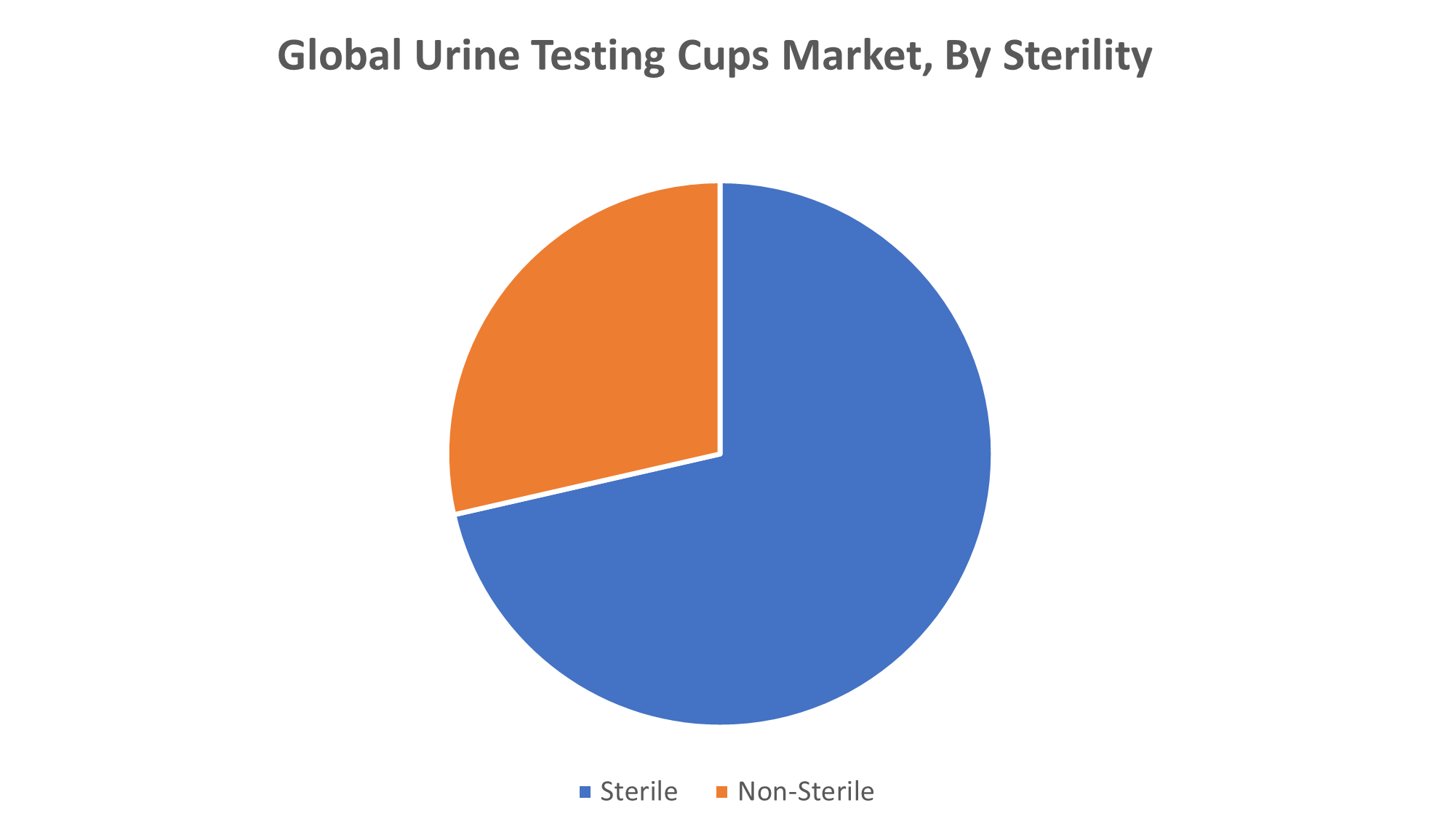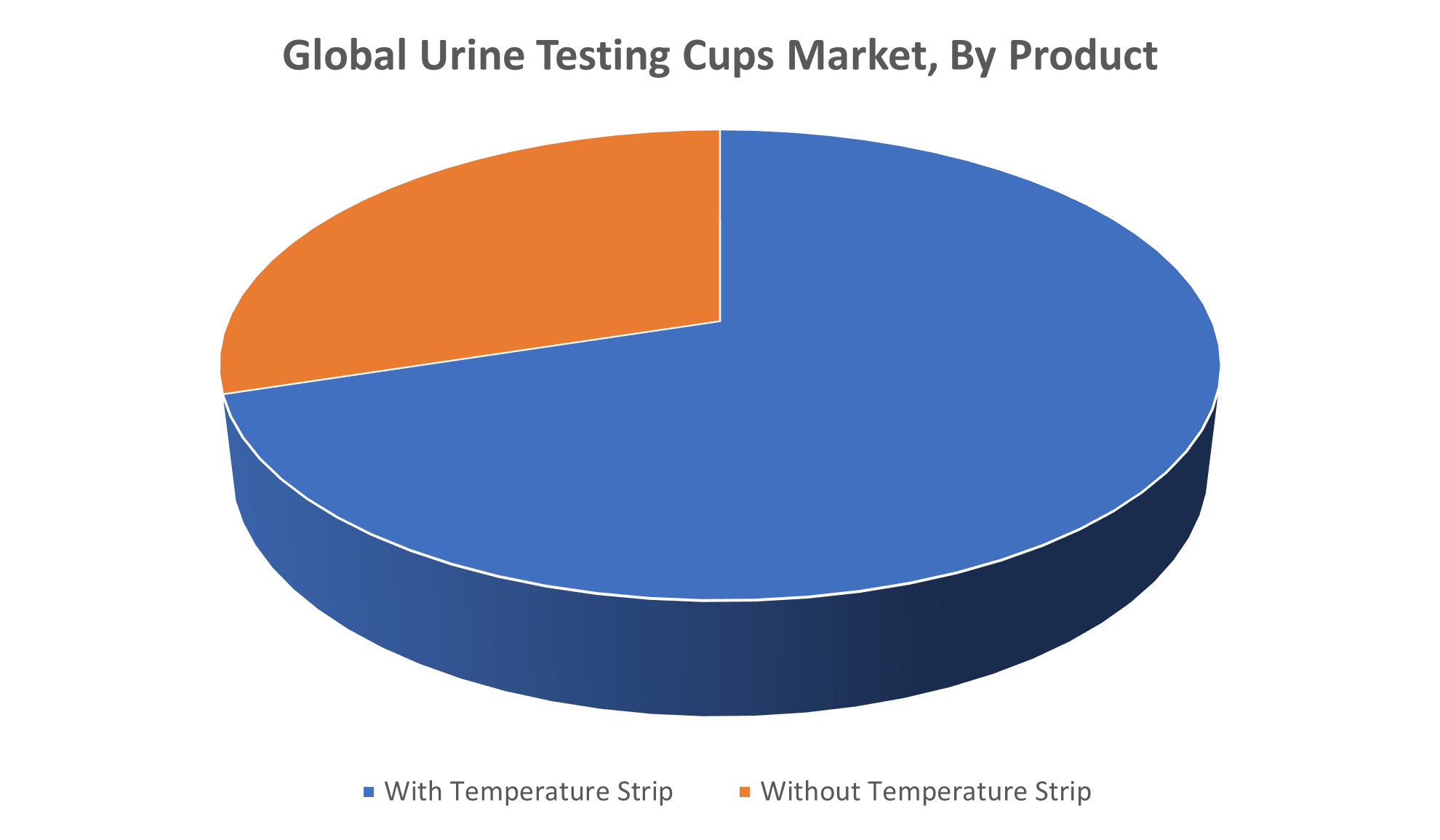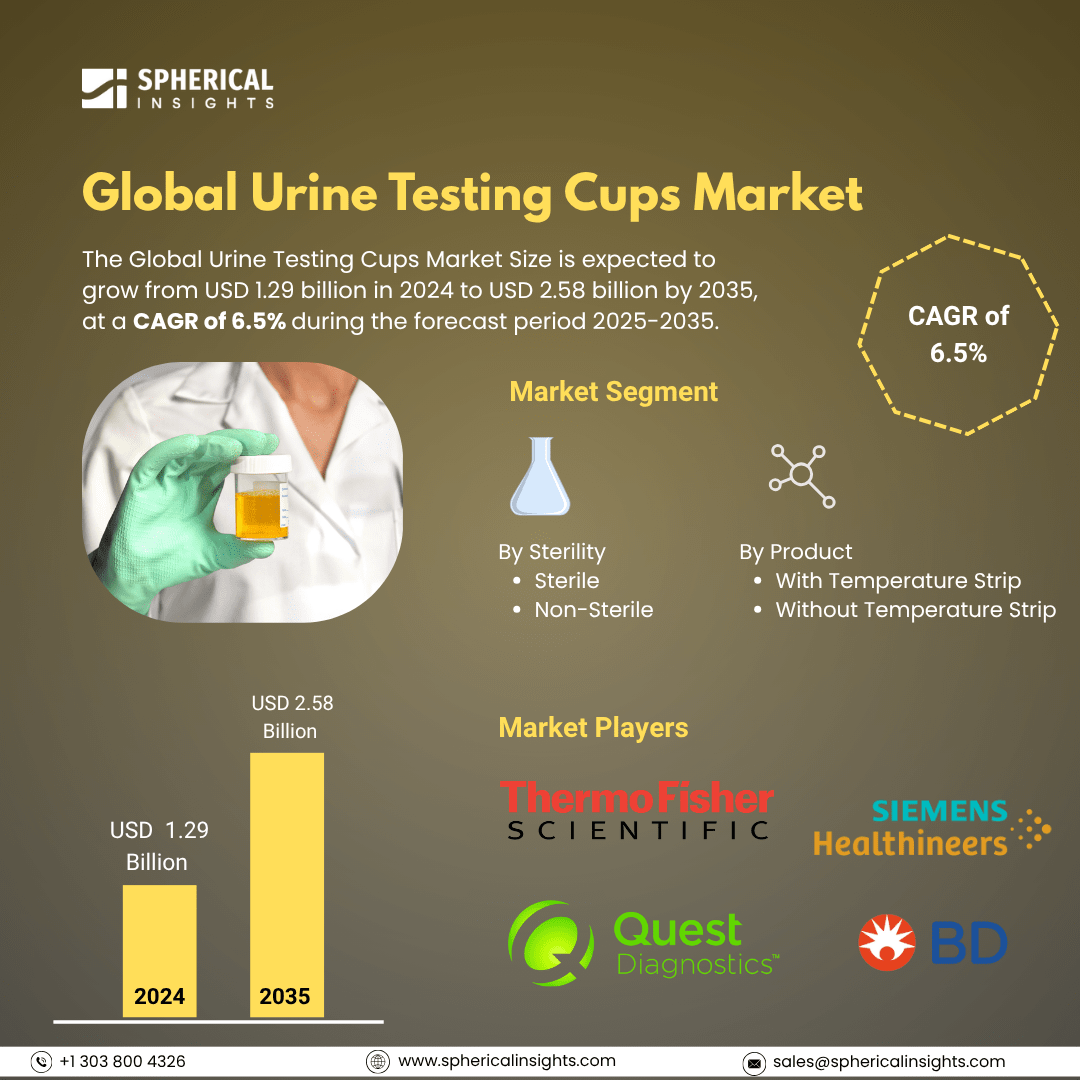Global Urine Testing Cups Market Insights Forecasts to 2035
- The Global Urine Testing Cups Market Size Was Estimated at USD 1.29 Billion in 2024
- The Market Size is Expected to Grow at a CAGR of around 6.5% from 2025 to 2035
- The Worldwide Urine Testing Cups Market Size is Expected to Reach USD 2.58 Billion by 2035
- Asia Pacific is expected to grow the fastest during the forecast period.

Urine Testing Cups Market
The Global Urine Testing Cups Market Size is an essential part of the diagnostic testing industry, widely used for drug screening, pregnancy testing, and monitoring of medical conditions. These cups offer a convenient, non-invasive, and efficient method for collecting and analyzing urine samples. They are available in various types, including sterile and non-sterile versions, often featuring built-in temperature strips or adulteration detection to ensure sample integrity. End-users include hospitals, clinics, diagnostic laboratories, and home healthcare settings. The market benefits from the growing adoption of point-of-care testing, with advancements in product design improving usability and accuracy. Urine testing cups are valued for their ability to deliver rapid results, often within minutes, making them a preferred choice in time-sensitive testing scenarios. As healthcare systems prioritize early detection and routine screening, the demand for urine testing cups is steadily increasing, supporting market growth across clinical, occupational health, and personal health monitoring applications.
Attractive Opportunities in the Urine Testing Cups Market
- Urine testing cups can evolve beyond drug and disease detection to assess nutritional status and early metabolic issues like diabetes or kidney function. This opens new health screening possibilities, appealing to wellness-focused consumers and healthcare providers aiming for preventive care. Early detection through urine tests can improve patient outcomes and reduce healthcare costs.
- Smart urine cups that sync with mobile apps enable users to monitor their health conveniently at home and share results remotely with doctors. This integration supports telehealth growth, empowering patients with real-time insights and improving engagement in their health management. It also offers opportunities for personalized health tracking and data-driven diagnostics.
- Health screening in schools, sports teams, and wellness centers is becoming more common to promote early detection and overall well-being. These sectors create new demand for easy-to-use, reliable urine testing cups. Targeting these segments expands market reach beyond traditional clinical and workplace settings.
- As healthcare access improves in developing regions, there is growing demand for affordable, simple diagnostic tools. Urine testing cups that are cost-effective and easy to use can play a vital role in primary healthcare and community health programs. This presents significant growth potential for manufacturers focusing on emerging markets.
Global Urine Testing Cups Market Dynamics
DRIVER: Increasing need for rapid, non-invasive diagnostic tools across clinical and non-clinical settings.
One major driver is the increasing need for rapid, non-invasive diagnostic tools across clinical and non-clinical settings. Urine testing cups offer immediate results, making them ideal for point-of-care testing in hospitals, workplaces, and even at home. The rising prevalence of chronic diseases, such as diabetes and kidney disorders, is also fueling demand for regular urine analysis. Additionally, growing awareness around substance abuse and the need for workplace drug testing have significantly boosted the use of urine drug screening cups. Technological advancements, including features like built-in adulteration checks and digital result readers, are enhancing the accuracy and ease of testing. Moreover, the trend toward decentralized healthcare and preventive medicine supports the adoption of user-friendly diagnostic tools. Together, these factors contribute to a steady increase in demand for urine testing cups across various healthcare and occupational health applications.
RESTRAINT: Regulatory inconsistencies across countries
Potential for sample adulteration, including the use of synthetic urine or dilution techniques, which can compromise test accuracy and reliability. This raises trust issues, especially in sensitive applications like workplace drug testing and forensic analysis. Additionally, urine testing cups may offer lower sensitivity and specificity compared to traditional laboratory-based methods, limiting their acceptance for comprehensive diagnostics. The initial cost of advanced urine testing devices with integrated features, such as digital readers or adulteration checks, can also be a barrier, particularly in low-resource settings. Furthermore, regulatory inconsistencies across countries regarding medical device approvals and testing standards can slow down product deployment and increase compliance costs. These challenges collectively impact the widespread adoption and growth potential of urine testing cups, despite their advantages in convenience and speed.
OPPORTUNITY: Expanding into health checks for nutrition and early signs of metabolic issues
One promising area is expanding into health checks for nutrition and early signs of metabolic issues, not just drug testing or disease monitoring. There is also growing potential in using smart technology, such as urine cups that connect to mobile apps, allowing people to monitor their health from home and share results with doctors remotely. This fits well with the rise of telehealth and remote care. In addition, schools, sports programs, and wellness centers are starting to use health screening tools more regularly, creating new demand. Partnering with digital health companies could lead to better features, like tracking health data over time. Finally, in developing countries where healthcare access is improving, affordable and easy-to-use testing cups could become a key part of basic health services. These trends create new growth paths for companies in the market.
CHALLENGES: Ensuring consistent product quality across different manufacturers
One key challenge is ensuring consistent product quality across different manufacturers, especially with the rise of low-cost, unregulated products entering the market. Variations in test accuracy and reliability can damage user confidence and reduce adoption. Another challenge is user error in sample collection and interpretation, particularly in home or non-clinical settings where professional supervision is lacking. This can lead to false results and misdiagnosis. Data privacy and security are also growing concerns as smart urine testing devices become more connected through digital platforms, raising risks around sensitive health information. Additionally, healthcare providers may face difficulties integrating point-of-care urine test data into electronic medical records due to a lack of standardization. Limited awareness or training about the proper use and benefits of modern urine testing cups among healthcare workers and consumers further complicates efforts to expand their use globally.
Global Urine Testing Cups Market Ecosystem Analysis
The global urine testing cups market ecosystem includes manufacturers producing basic to advanced cups, raw material suppliers, and technology partners for digital features. Distributors connect these products to end-users like hospitals, labs, workplaces, and home users. Regulatory bodies ensure quality and safety compliance. Healthcare providers guide usage, while R&D and digital health companies drive innovation and integration with mobile apps and telehealth. Consumers, especially in home-testing, play a growing role, pushing the market toward more accessible and connected solutions. This interconnected network supports the market’s development and expansion globally.
Based on the sterility, the sterile dominated the urine testing cups market over the forecast period
Sterile urine testing cups have dominated the market over the forecast period primarily because they ensure the highest level of sample integrity, which is crucial for accurate diagnostic results. In medical and forensic testing, any contamination can lead to false positives or negatives, compromising patient care or legal outcomes. Sterile cups are manufactured under controlled conditions to eliminate bacteria, viruses, and other contaminants, making them ideal for sensitive applications like drug screening, pregnancy testing, and disease diagnosis.

Based on the product, the with temperature strips held the largest market of the urine testing cups market over the forecast period
Urine testing cups with temperature strips have held the largest market share over the forecast period. These cups are widely preferred because the built-in temperature strip helps verify the sample's freshness and authenticity immediately after collection, which is crucial for preventing tampering or adulteration. This feature is especially important in drug testing and workplace screenings, where the accuracy and integrity of the sample are critical. The temperature strip provides a quick, easy way to ensure the sample was collected under proper conditions, boosting confidence in test results. As a result, urine testing cups with temperature strips are extensively used in clinical, forensic, and occupational settings, driving their dominance in the market.

North America is anticipated to hold the largest market share of the urine testing cups market during the forecast period
North America is anticipated to hold the largest market share in the urine testing cups market during the forecast period. This leadership is driven by well-established healthcare infrastructure, stringent regulations around drug testing, and widespread adoption of advanced diagnostic technologies. The region’s strong focus on workplace drug screening, supported by government policies and corporate compliance requirements, further fuels demand. Additionally, increasing awareness about preventive healthcare and rising investments in research and development contribute to market growth. The presence of major market players and continuous innovation in product design also help North America maintain its dominant position in the global urine testing cups market.
Asia Pacific is expected to grow at the fastest CAGR in the urine testing cups market during the forecast period
Asia Pacific is expected to grow at the fastest CAGR in the urine testing cups market during the forecast period. This rapid growth is driven by increasing healthcare awareness, expanding healthcare infrastructure, and rising demand for affordable and convenient diagnostic solutions in the region. Additionally, growing government initiatives to improve public health and the rising prevalence of chronic diseases are boosting the adoption of urine testing cups. The expanding population and increasing adoption of point-of-care testing in countries like China, India, and Southeast Asia further contribute to the market’s accelerated growth in the Asia Pacific region.
Recent Development
- In September 2024, PreAnalytiX, a joint venture between QIAGEN and BD, has launched the PAXgene Urine Liquid Biopsy Set, enabling non-invasive urine sample collection and immediate stabilization of cell-free DNA. This innovative solution includes a collection cup and a nucleic acid stabilizing tube, advancing liquid biopsy capabilities.
Key Market Players
KEY PLAYERS IN THE URINE TESTING CUPS MARKET INCLUDE
- Thermo Fisher Scientific Inc.
- Quest Diagnostics Incorporated
- Siemens Healthineers
- BD (Becton, Dickinson and Company)
- Cardinal Health
- Greiner Bio-One International GmbH
- Medline Industries, Inc.
- Alere Inc.
- Premier Biotech, Inc.
- Express Diagnostics Int'l, Inc.
- Others
Segment
This study forecasts revenue at global, regional, and country levels from 2020 to 2035. Spherical Insights has segmented the urine testing cups market based on the below-mentioned segments:
Global Urine Testing Cups Market, By Sterility
Global Urine Testing Cups Market, By Product
- With Temperature Strip
- Without Temperature Strip
Global Urine Testing Cups Market, By Regional Analysis
- North America
- Europe
- Germany
- UK
- France
- Italy
- Spain
- Russia
- Rest of Europe
- Asia Pacific
- China
- Japan
- India
- South Korea
- Australia
- Rest of Asia Pacific
- South America
- Brazil
- Argentina
- Rest of South America
- Middle East & Africa
- UAE
- Saudi Arabia
- Qatar
- South Africa
- Rest of the Middle East & Africa






